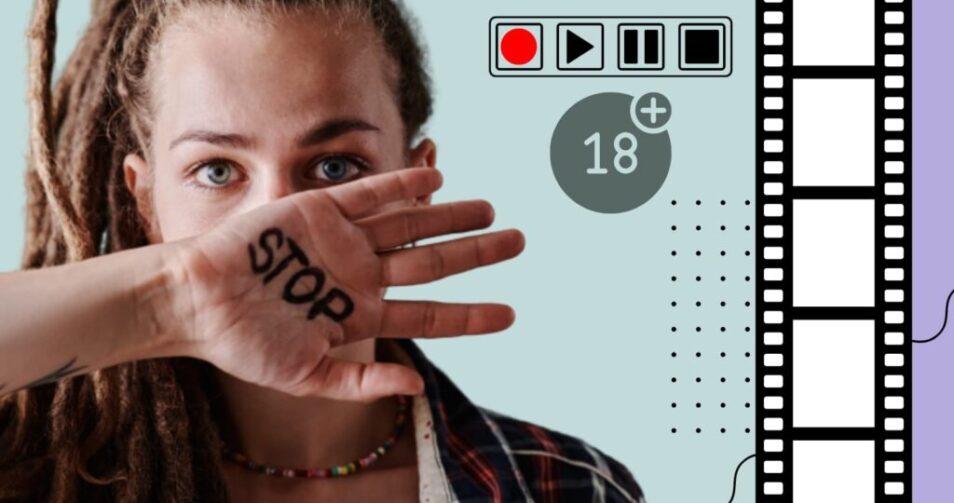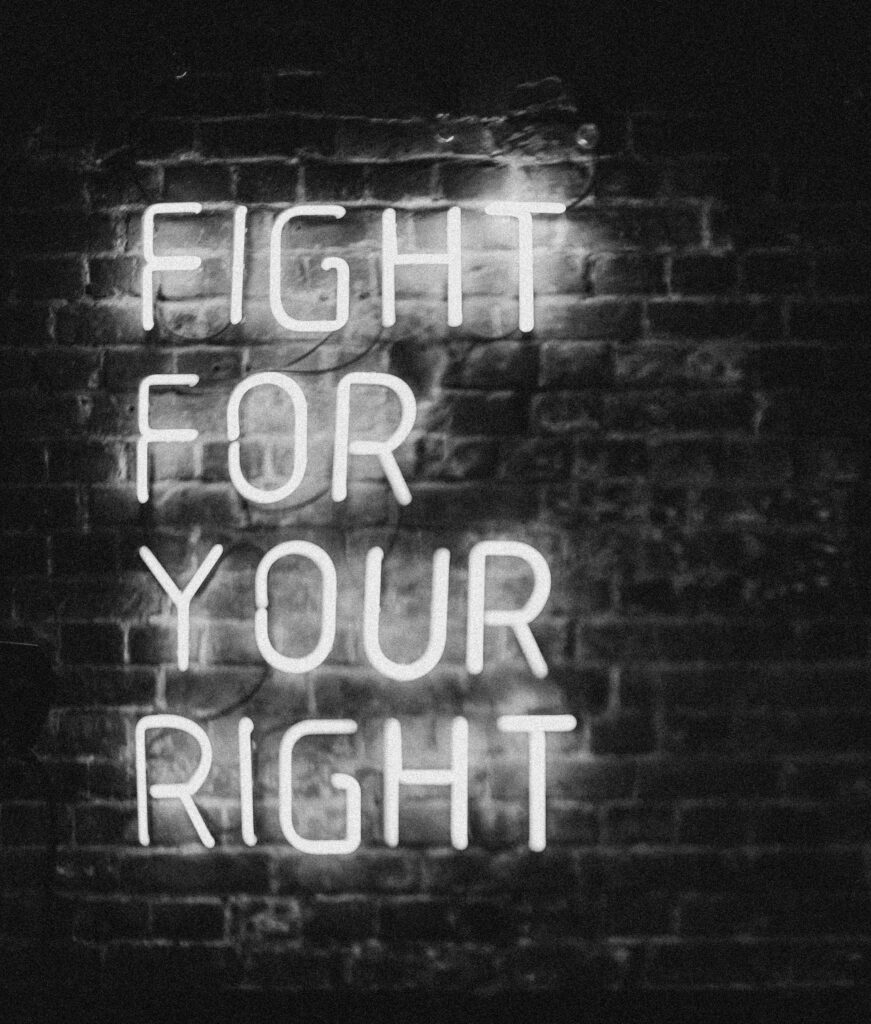A Step-by-Step Guide to Removing Revenge Porn from the Internet

In today’s digital age, the power of the internet has brought numerous benefits to our lives. However, it has also opened the door for new forms of harassment and abuse. One such insidious phenomenon is revenge porn, a heinous sexual act, that has left countless victims in its wake. And how to remove revenge porn from the Internet? This is what we are going to cover.
This long read will provide a comprehensive understanding of revenge porn and its repercussions, followed by a step-by-step guide on how to remove non-consensual pornography from the internet.
I strongly believe that it will be helpful for all the victims of revenge porn who want to remove explicit videos from the Internet and get satisfaction.
Table of Contents
- What is a revenge porn (non-consensual pornography)?
- What are the types of revenge pornography?
- The alarming rise in revenge porn cases
- Understanding the root causes of revenge porn
- Legal actions against revenge porn
- Step-by-step guide to removing revenge porn from the internet ❌
- Maintain your emotional well-being
- Prevention and education
- How to remove revenge pornography from Google search results?
- Start removing the unwanted content today
What is a revenge porn (non-consensual pornography)?
Revenge pornography, also known as non-consensual pornography or cyber sexual abuse, is a harmful form of online abuse. It involves the sharing or posting of explicit or sexual photos or videos of a person or a sexual act, without their consent, often in a bid to shame, harm, intimidate, or control the victim. It’s a serious offense in many jurisdictions, with laws and regulations enacted to protect victims and punish perpetrators
Such explicit photos or videos may be shared through various channels such as social media sites, messaging apps, or dedicated revenge porn sites. And this “easy spread” is one of the most significant troubles of such actions for a revenge porn victim.
What are the types of revenge pornography?
Here are some of the common types of revenge porn:
Sharing intimate images or videos without consent
This is the most common form of revenge porn and can happen when relationships break down, leading one party to share intimate personal images or videos of sexual contact or other explicit content that was exchanged privately during the relationship.
Posting intimate content online
Sometimes, explicit content can be found in Google search results or other search engines because it is posted on public platforms such as social media, pornographic sites, or other public forums, aiming to maximize the victim’s humiliation and distress.
Blackmailing with intimate content
The offender could threaten to release the content unless the victim complies with certain demands, ranging from financial to sexual. It is also known as a sexual extortion or sextortion.
Non-consensually recording intimate activities
Some revenge porn involves sexually explicit images or videos that were recorded without the consent or knowledge of the victim. This could be through hidden cameras or other covert recording devices or methods.
Manipulated content
Sometimes, explicit content is created by manipulating intimate images or videos of the victim. This could involve deepfakes or other forms of image manipulation to create convincing explicit content that appears to feature the victim.
Spreading intimate content via messaging apps
This involves sharing intimate private images or videos via messaging apps or peer-to-peer platforms, often to a group of people known to the victim.
Using intimate content for ‘sexploitation’
In this situation, the offender uses sexually explicit content to force the victim into engaging in further sexual acts.
Doxing alongside intimate content
This involves sharing a sexually explicit image or video along with personal details about the victim, such as their name, address, or workplace, with the intention of causing maximum harm and humiliation.
The alarming rise in revenge porn cases
In recent years, there has been a concerning increase in the number of revenge porn cases worldwide. Advances in technology and the ubiquity of smartphones have made it easier than ever to capture and disseminate private, sexually explicit images, videos or other content in search engines.
Social media platforms and messaging apps have further facilitated the rapid spread of such materials, leading to devastating consequences for the victims.
Although precise statistics on revenge porn cases are difficult to obtain, studies suggest that the problem is pervasive and growing, affecting people of all genders, ages, and backgrounds.
The emotional, psychological, and legal consequences
The impact of revenge porn on victims cannot be overstated. The unauthorized distribution of intimate content might not be associated with physical harm, but can lead to severe emotional and psychological distress, including feelings of shame, embarrassment, and powerlessness.
Victims may suffer from anxiety, depression, and even suicidal thoughts. Furthermore, the stigma associated with revenge porn can result in social isolation, damaged relationships, and professional repercussions.
In addition to the emotional and psychological toll, revenge porn also presents a host of legal challenges. Many jurisdictions have enacted laws criminalizing non-consensual pornography, but the complex nature of the internet and the varying legal frameworks across countries can make it difficult to prosecute offenders and permanently remove the content.
Consequently, victims often face an uphill battle in their quest to reclaim their privacy and restore their reputations.
In the following sections, we will delve deeper into the root causes of revenge porn and explore practical steps for removing such content from the internet. By understanding the issue and empowering victims with the tools to fight back, we can work towards a future where the internet is a safer space for everyone.

Remove revenge porn from the Internet
NonDetected provides expert assistance in removing any type of content from various online platforms and can help you take the necessary steps to protect your online privacy.
We understand the importance of revenge porn removal from Google search results.
If you are one of the revenge porn victims, don’t hesitate to contact us for more information and professional support.
Understanding the root causes of revenge porn
To effectively combat revenge porn, it is crucial to understand the underlying motivations and factors that drive perpetrators to engage in this harmful behavior. By examining the root causes, we can better address the issue and develop targeted strategies for prevention and intervention.
There are no specific breakdowns, still I’ll be sharing several most common reasons below.
The desire for control and power over the victim
One of the primary motivations behind revenge porn is the perpetrator’s desire to exert control and power over the victim. By sharing intimate content without consent, the perpetrator aims to humiliate and degrade the victim of revenge porn, often as a means of retaliation or manipulation.
This dynamic is particularly prevalent in cases where the perpetrator and victim share a prior romantic or sexual relationship, with the act of revenge porn serving as an extension of the abuser’s control even after the relationship has ended.
Revenge for perceived slights or relationship breakdowns
Another common factor driving revenge porn is the perpetrator’s desire for retribution against the revenge porn victim.
In some cases, the offender may feel wronged by the victim, whether due to a perceived slight or a relationship breakdown, and use non-consensual pornography as a means to exact revenge.
By publicly using intimate image and exposing the victim’s intimate content, the perpetrator aims to inflict maximum damage on the victim’s reputation, social standing, and emotional well-being.
The role of technology and social media in facilitating revenge porn
The rapid advancement of technology and the proliferation of social media sites have played a significant role in the escalation of revenge porn cases. With smartphones and digital cameras becoming increasingly commonplace, it has never been easier for individuals to capture and store explicit content.
Furthermore, the rise of social media platforms and messaging apps has facilitated the rapid and widespread dissemination of such materials, making it increasingly difficult for victims to contain the damage and regain control over their personal images. Unfortunately, it spreads in Google search results and other search engines quite fast.
While comprehensive and up-to-date statistics on revenge porn cases are challenging to gather, existing research and anecdotal evidence suggest that the problem is widespread and affects a diverse range of individuals. According to a 2016 study by the Data & Society Research Institute, approximately one in 25 Americans has been a victim of non-consensual pornography or threatened with its release. Moreover, the study found that women and younger individuals were disproportionately affected by revenge porn.
The psychological impact of revenge porn on victims can be devastating, with many experiencing symptoms of anxiety, depression, and post-traumatic stress disorder (PTSD). In addition to the emotional toll, victims may also face social and professional repercussions, as the release of intimate content can damage their reputations and harm their career prospects.
In the next section, we will discuss the legal actions that can be taken against revenge porn sites and explore a step-by-step guide to removing such content from the internet.
Legal actions against revenge porn
As the prevalence of revenge porn continues to rise, lawmakers around the world have taken steps to address the issue through legal channels. Understanding the legal landscape surrounding non-consensual pornography is critical for victims seeking justice and protection.
Laws and regulations against non-consensual pornography
In recent years, many countries and states have enacted laws specifically targeting revenge porn. These laws typically criminalize the distribution of intimate images or videos without the consent of the depicted individual, with penalties ranging from fines to imprisonment.
The Digital Millennium Copyright Act (DMCA) is a U.S. copyright law enacted in 1998, aimed at protecting copyrights in the digital environment. The law has several provisions, but the one most relevant to revenge porn is the “notice and takedown” procedure.
Under the DMCA, copyright owners (or their agents) can issue a takedown notice to an Internet Service Provider (ISP) or website hosting company if their copyrighted work is found online without their permission. This can apply to revenge porn victims because they often hold the copyright to the intimate images or videos being shared without their consent, particularly if they took the images or videos themselves.
In the United States, for example, the majority of states have passed legislation outlawing revenge porn, while some countries in Europe, such as the United Kingdom and Germany, have also introduced laws to tackle the problem.
It is essential for victims to familiarize themselves with the laws and regulations in their jurisdiction to understand their legal rights and options when faced with non-consensual pornography.
Legal consequences for perpetrators
Perpetrators of revenge porn may face a range of legal consequences, depending on the specific local law enforcement and regulations in their jurisdiction. It may even cause a revenge porn lawsuit and in some cases, offenders may be charged with criminal offenses such as harassment, extortion, or invasion of privacy, resulting in fines or imprisonment.
Additionally, civil lawsuits may be filed by victims to seek compensation for damages caused by the non-consensual distribution of intimate content.
The severity of legal consequences for perpetrators can serve as a deterrent for potential offenders and provide a measure of justice and closure for a victim of revenge porn.
The challenges in prosecuting revenge porn cases
Despite the progress made in establishing legal protections against revenge porn, prosecuting such cases can be fraught with challenges. One of the main obstacles is the difficulty in gathering sufficient evidence to prove that the intimate content was shared without consent.
In some instances, victims may have willingly shared the private images with the perpetrator, complicating the legal proceedings.
Another challenge lies in the global nature of the internet, which allows perpetrators to distribute content across multiple jurisdictions with differing laws and regulations. This can make it difficult for law enforcement agencies to track down and apprehend offenders, particularly if they reside in a different country.
Moreover, the slow-moving nature of legal proceedings can be frustrating for victims, who may feel that the process does not adequately address the urgency of their situation. In light of these challenges, it is crucial for a victim of revenge porn to seek professional legal advice and explore alternative avenues for removing revenge porn from the internet, as detailed in the following section.
As someone who has been working in the field of online reputation management for over six years, I have had the privilege of assisting numerous victims in reclaiming their privacy and moving forward from the devastating effects of revenge porn.
If you find yourself in this unfortunate situation, know that you are not alone, and there is hope. With the right approach, you can take control of the situation and begin the process of healing.
Step-by-step guide to removing revenge porn from the internet ❌

In this section, I am sharing an exact list of actions to take if you are a victim of non-consensual pornography shared or posted online.
Here is a short list in the form of steps that should be taken:
- Identify and document all instances
- Report non consensual porn to the hosting platform
- Contact a lawyer or legal advisor
- Seek assistance from specialized organizations
- Maintain your emotional well-being
- Build a support network with friends and family
Now let me focus on each step in detail.
Identify and document all instances
The first and one of the most essential parts is to identify and document all instances of revenge porn. So let’s start from this point.
1) Locate all URLs and platforms where the content is posted
The first step in addressing revenge porn is to identify and document all instances of the content on the internet. Conduct thorough searches across various platforms, including social media, Google search, and other engines, and dedicated revenge porn websites, to locate all instances of the content.
Keep a record of the URLs and any relevant information about the platforms hosting the material.
2) Take screenshots and gather evidence for legal action
Once you have identified all instances of the revenge porn, gather evidence by taking screenshots or downloading the content. Ensure that the photo or video screenshots capture crucial details such as the date, time, and platform.
This evidence may be required for legal action or when reporting the content to the hosting platforms.
Report the revenge porn to the hosting platform
Now comes the next step – reporting. You can send a removal request by following the steps you’ll find below.
1) Familiarize yourself with the platform’s reporting process
Most platforms have a reporting process in place for addressing non-consensual pornography. Familiarize yourself with the platform’s specific policies and procedures by visiting their help center or contacting their support team.
It is essential to follow the platform’s reporting process to maximize the chances of having the content removed.
2) Provide necessary evidence and documentation
When reporting the revenge pornography to the hosting platform, provide the necessary evidence and documentation, such as the image URL or URLs of the other content and the screenshots you have gathered. Be concise and clear in your communication, explaining that the content was shared without your consent and that you wish for it to be permanently removed as soon as possible.
Contact a lawyer or legal advisor
If you finished with the previous steps, it’s time for legal actions.
1) Understand your legal rights and options
Given the complex legal landscape surrounding the revenge porn laws, it is crucial to consult with a lawyer or legal advisor to understand your rights and options.
A legal professional can help you navigate the relevant laws and regulations in your jurisdiction and advise you on the best course of action.
2) Prepare for potential legal proceedings
If you decide to pursue legal action against the perpetrator, be prepared for the process involved. Your lawyer will guide you through the necessary steps, which may include gathering additional evidence, filing a complaint, and potentially attending court hearings.
Remember that legal proceedings can be time-consuming and emotionally draining, so ensure that you have a strong support system in place to help you through the process.
Seek assistance from specialized organizations
You can opt for this step if you do not want to start all the legal trials, spend an enormous amount of money, and wait for long months before any results.
Non-profit organizations and support groups
In addition to legal and practical steps, it is crucial to seek support from organizations that specialize in helping victims of revenge porn. Numerous non-profit organizations and support groups offer resources, guidance, and emotional support to those affected by non-consensual pornography.
These organizations can help you navigate the process of removing the content, as well as provide invaluable emotional support during a challenging time.
Professional services like NonDetected
For expert assistance in removing revenge porn from the internet, consider consulting professional services like NonDetected. With years of experience and a deep understanding of the intricacies involved in online content removal, NonDetected can provide personalized guidance and support throughout the process.
Simply leave a free inquiry on our website to begin exploring your options and receive assistance from our team of experts.
Maintain your emotional well-being
It’s another important point of the process when you face this trouble.
Seek therapy or counseling
The emotional impact of revenge pornography can be overwhelming, and it is essential to prioritize your mental health during this difficult time. Seeking therapy or counseling can help you process your feelings, develop coping strategies, and work towards healing.
A mental health professional can provide valuable guidance and support, allowing you to regain control of your life and move forward with confidence.
Build a support network with friends and family
In addition to professional help, it is vital to have a strong support network of friends and family who can provide emotional support, encouragement, and understanding. Share your experience with trusted loved ones, and allow them to help you through this challenging time.
Remember that you are not alone in your fight against revenge porn, and the support of your friends and family can make a significant difference in your healing process.
Prevention and education
While it is crucial to address and remediate revenge pornography incidents when they occur, prevention and education are equally important in the fight against this harmful phenomenon. By raising awareness about the dangers of non-consensual pornography and promoting responsible digital behavior, we can work together to create a safer online environment for all.
Educating the public about the dangers of revenge porn
Public awareness is a vital tool in preventing revenge porn. By educating individuals about the consequences of non-consensual pornography, we can create a broader understanding of the issue and encourage empathy towards victims. This includes raising awareness about the emotional, psychological, and legal consequences of revenge porn, as well as the potential repercussions for perpetrators.
Educational initiatives can take various forms, such as awareness campaigns, school programs, and public service announcements. These efforts should aim to inform individuals about the risks associated with sharing intimate content, as well as the importance of consent and respect in digital communication.
Promoting responsible digital behavior and online privacy
Promoting responsible digital behavior and online privacy is another essential aspect of preventing revenge porn. Encouraging individuals to be cautious with their digital footprint and to prioritize their online privacy can help minimize the risk of non-consensual pornography incidents.
Some strategies for promoting responsible digital behavior include:
- Encouraging individuals to think carefully before sharing intimate content, considering the potential risks and consequences involved.
- Highlighting the importance of strong, unique passwords for online accounts and devices to prevent unauthorized access.
- Educating individuals about privacy settings on social media platforms and apps, ensuring that they are aware of who can view their content and personal information
- Stressing the importance of trust and consent in digital communication, particularly when it comes to sharing intimate or sensitive content.
By implementing these prevention and education measures, we can foster a culture of respect, consent, and empathy in the digital age, ultimately reducing the prevalence of revenge pornography and creating a safer online environment for all.
How to remove revenge pornography from Google search results?
Google has a policy against “revenge porn” and provides a process through which victims can request the removal of explicit content shared without their consent.
Here’s a step-by-step guide on how to use Google to remove revenge porn:
- Visit Google’s “Remove explicit content shared without your consent“
- Read the introductory information carefully. It provides important context about what Google can and can’t do.
- When you’re ready, click on the “Request the removal of explicit content shared without your consent” button.
- You’ll be asked to provide the offending content’s video or image URL(s). These are the exact web addresses where the images or videos can be seen.
- You’ll also be asked to verify that you’re the person in the content, and that you didn’t consent to its distribution.
- Submit the removal request form. Google will review your request and, if it aligns with their policy, they will remove the content from their search results.
Remember, Google can’t remove revenge porn from the internet altogether; it can only remove it from its search results. If the content is hosted on a specific website, you’ll need to reach out to that website’s administrator or webmaster to request removal.
If the content is on a social media site, each platform typically has its own procedure for revenge porn removal. It should be found under reporting and removing inappropriate content.
Start removing the unwanted content today
The devastating effects of revenge porn cannot be overstated. With far-reaching emotional, psychological, and social consequences, non-consensual pornography has the power to disrupt and even destroy lives. However, it is crucial to remember that there is hope, and solutions are available for those who find themselves in this challenging situation.
As a society, we must come together to address and eliminate revenge porn. This means supporting revenge porn victims and helping them reclaim their privacy and working tirelessly to prevent such incidents from occurring in the first place.
By raising awareness, promoting responsible digital behavior, and pushing for legal reform, we can create a safer online environment that respects the rights and dignity of all individuals.
In the face of adversity, expert services like NonDetected stand ready to help victims of revenge porn regain control of their lives. By providing personalized guidance and support, our team of experienced professionals can assist victims in removing harmful content from the internet and protecting their privacy.
With compassion and understanding, we strive to make a difference in the lives of those affected by non-consensual pornography.
As we move forward, we must continue our efforts in legal reform, education, and support for victims. This includes advocating for stronger revenge porn laws, educating the public about the dangers of non-consensual pornography, and providing resources and assistance to those in need. By working together, we can make a lasting impact in the fight against revenge porn and help victims reclaim their lives.
In the darkest moments, remember that you are not alone, and there is a path to recovery. If you or someone you know is facing the challenge of revenge porn, do not hesitate to reach out to NonDetected for help or at least, contact associations and organizations such as Cyber Civil Rights Initiative or Revenge Porn Helpline if you are in the UK.
Together, we can make a difference and create a future free from the harm of non-consensual pornography.


